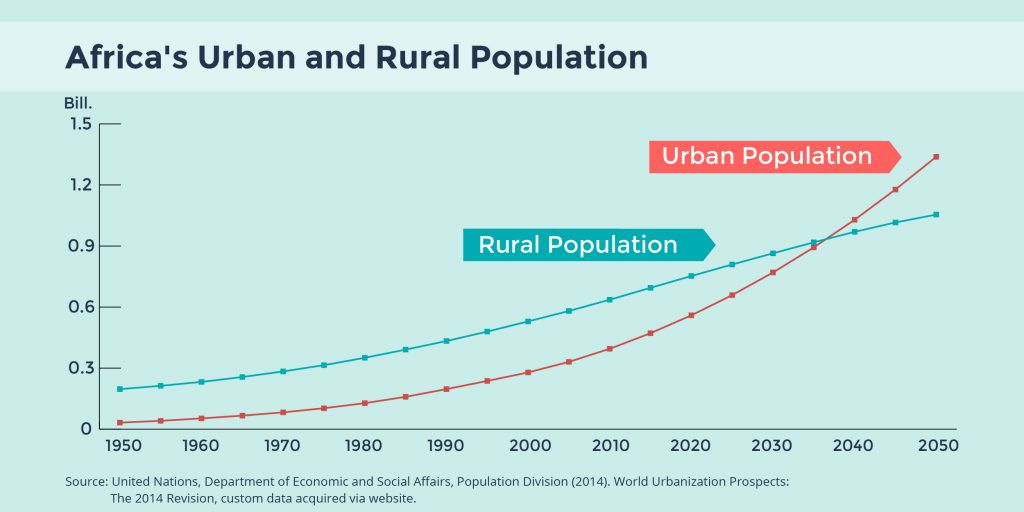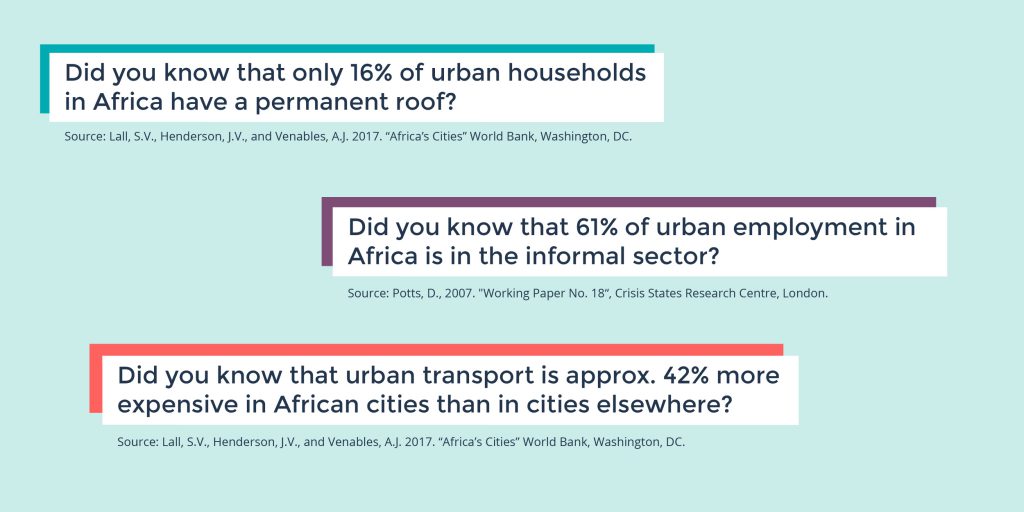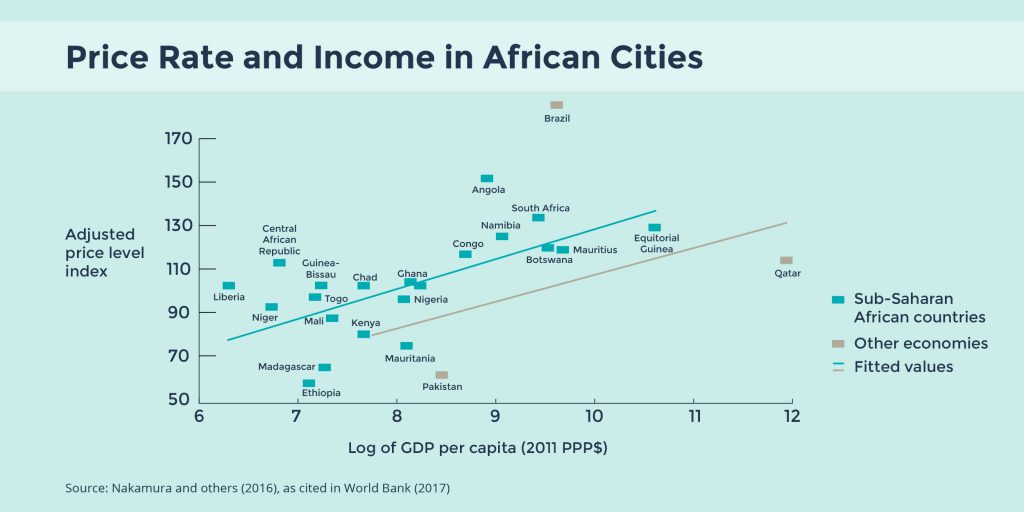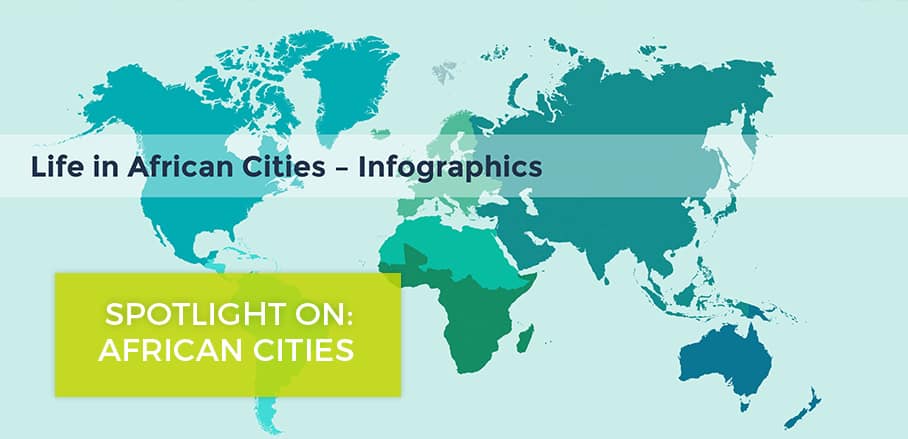Life in African Cities | Infographics
Are African cities cheap or expensive for their inhabitants? And by how much do cities grow each year? The URBANET infographics on African cities provide key figures and numbers on some interesting trends concerning urban life and development.

In Africa, the absolute numbers of rural inhabitants still succeed those of the urban population. However, by mid-2030 the growth of the urban population is expected to exceed the growth of the rural population, with approximately 1 billion people living in Africa’s urban centres.

Living in African cities still comprises many obstacles that need to be addressed in order to achieve sustainable and inclusive urban development.

Most African cities have particularly high prices relative to their level of development. The graph depicts the costs of living in cities in various sub-Saharan countries in relation to the GDP per capita (PPP$ stands for Purchasing Power Parity in Dollars). To illustrate the difference in comparison to other economies, three non-African countries were chosen as reference values. The data shows that price levels for household expenses are on average 31 per cent higher in sub-Saharan Africa than elsewhere. Some rather expensive countries are Angola, Chad or Mozambique.
* Full source: Lall, S.V., Henderson, J.V., and Venables, A.J. 2017. “Africa’s Cities: Opening Doors to the World.” World Bank, Washington, DC.
